I found myself at the southernmost tip of Rhodes, totally mesmerized by what was happening in front of me. At Prasonisi Beach, the Aegean and Mediterranean seas meet, creating this wild natural spectacle where kitesurfers glide across waters that change from rough waves on one side to almost lagoon-like calm on the other.
The sandy strip that links the mainland to Prasonisi island doesn’t stay the same all year. Sometimes it’s a peninsula, other times the island stands alone. Nature just does its own thing here.
My first glimpse of this windswept spot came after a winding drive through the sleepy village of Kattavia. When I finally crested the last hill, I instantly got why water sports lovers make the pilgrimage out here. The constant winds and the wild geography set the perfect scene for kitesurfers and windsurfers. The beach turns into a kind of open-air theater, with bright kites swirling against the endless Mediterranean sky.
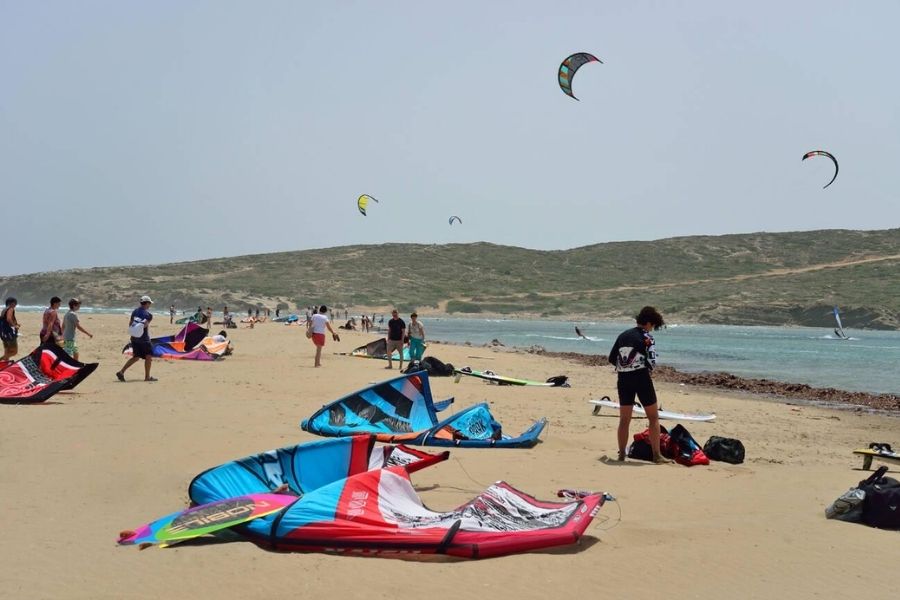
What really caught my attention was how one place could feel so different depending on which side you’re on. The western shore gets hammered by powerful winds and waves, drawing in the experienced surfers. The eastern side? Much gentler—great for swimming or just kicking back and watching the show. Prasonisi isn’t just a beautiful beach; it’s a place where nature’s forces keep things in constant motion for athletes and spectators alike.
Prasonisi: The Meeting Point of the Aegean and Mediterranean
Prasonisi sits at the very bottom of Rhodes, right where the Aegean Sea crashes into the Mediterranean. It’s honestly one of the most dramatic natural spots I’ve seen in Europe. The sandy bridge here links two totally different marine worlds.
Geographical Significance of Prasonisi
Prasonisi marks the exact spot where two major seas collide. It’s tucked away at the southern edge of Rhodes island in Greece.
What’s wild is how the landscape shifts with the seasons. In summer, when the sea pulls back a bit, a sandy strip rises up and connects the little Prasonisi islet to the main island.
Summer Formation:
- The sandy bridge pops up above the water.
- You can stroll across on dry land.
- Prasonisi becomes a peninsula.
Winter Formation:
- Higher water covers the sand bridge.
- Prasonisi turns into a separate island.
- You’ll need a boat to get there.
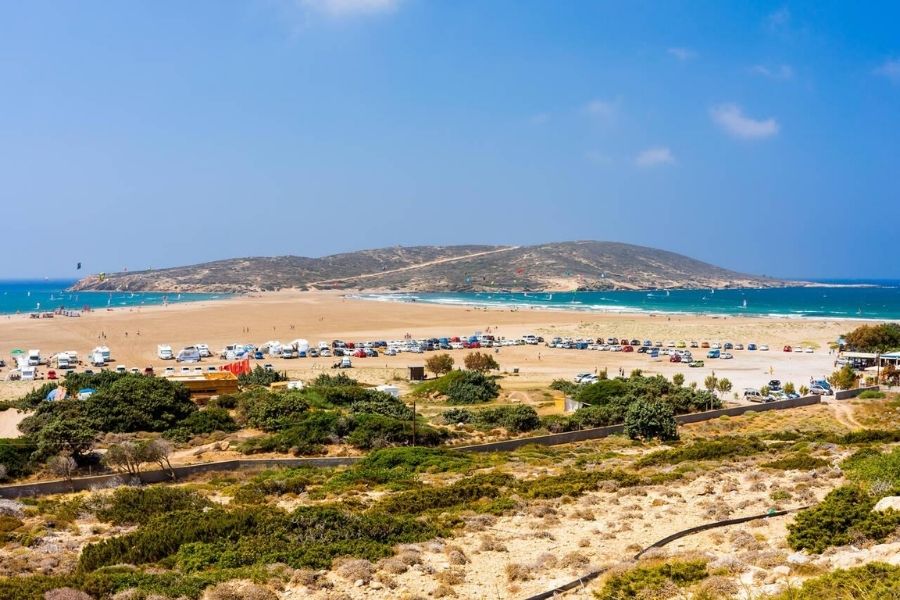
The sandbar runs about 500 meters long. On one side, the Mediterranean usually stays calm and sheltered. Flip around, and the Aegean side throws up bigger waves and stronger winds.
Visual and Natural Spectacle
Standing on Prasonisi’s sandbar, I get this view that feels almost unreal. To the left, the Mediterranean glows deep blue and placid. To the right, the Aegean churns up gray-green waves with real attitude.
The difference between the two seas is hard to miss. The Mediterranean side often seems mellow, with gentle waves brushing the shore. The Aegean side? It’s got some punch—whitecaps and lively currents.
A lighthouse stands at the very tip. If you get close, you can actually hear the two seas colliding. The sounds shift as the waters crash together.
The beach itself is a canvas. Wind sculpts the dunes and shoreline, and the sand changes color with the seasons—from golden yellow to almost pale brown.
Why the Two Seas ‘Kiss’ Here
Prasonisi’s unique underwater landscape pulls the two seas together. The sea floor rises up sharply, squeezing the different waters into a tight embrace.
The Aegean brings in cool, salty water from the north. The Mediterranean, on the other hand, carries warmer water with its own mineral mix.
Strong Meltemi winds, blowing from the north in summer, ramp up the drama. They shove the Aegean waters right into the Mediterranean’s path.
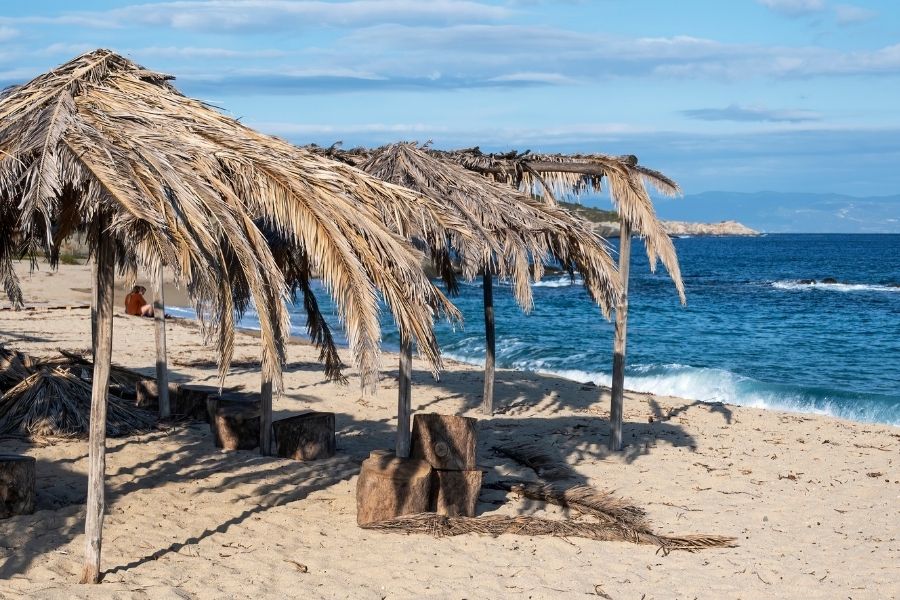
Shallow waters around Prasonisi force the seas to meet in a narrow space. Sometimes you’ll catch a visible line where the waters mix—a real color shift where they touch.
People call this the “kiss of two seas” for good reason. The meeting point creates ideal wind conditions for kitesurfing and windsurfing.
Atmosphere and Experience at Rhodes’ Southern Tip
Standing at Prasonisi, I honestly felt like I’d reached the edge of the world. Two seas, two moods, split by a narrow sweep of sand. The constant tug-of-war between the calm Mediterranean and the wild Aegean shapes everything here—from the wind to the wild, endless views.
The Character of Prasonisi Beach
Stepping onto Prasonisi’s sandy isthmus, the place just buzzed with energy. On one side, the Mediterranean Sea stretches out in peaceful blue. On the other, the Aegean thrashes with waves and muscle.
The beach morphs through the day. Mornings feel quiet, almost private. By midday, the sky fills with color as windsurfers and kitesurfers swoop in, catching the building wind.
The sand here is rougher than on other Rhodes beaches. Currents keep shifting it, and the strip connecting to the islet grows or shrinks depending on tides and the season.
There’s this feeling of remoteness I don’t get up north. Prasonisi feels wilder—fewer shops, fewer crowds, and a whole lot more raw beauty.
Seasonal Winds and Weather
Come July and August, Prasonisi gets blasted by the strongest winds—15 to 25 knots isn’t unusual. That’s when windsurfers and kitesurfers from all over Europe show up.
The Meltemi winds sweep in from the north, making the Aegean side perfect for the pros. Mornings are usually calmer, with wind under 10 knots, but by noon things pick up.
Spring and fall bring softer winds, still steady enough for beginners. The sea stays warm through October, so these shoulder seasons are great for anyone not chasing adrenaline.

Winter flips the script. The winds can get too intense, and most tourist spots close down. Only the lighthouse and the wild sea remain.
Vistas and Photographic Opportunities
Honestly, the views at Prasonisi are some of the best I’ve found in Greece. Standing on that skinny sandbar, I could get both seas in one shot.
The lighthouse on the islet anchors the scene. At golden hour, the contrast between the rough Aegean and the mellow Mediterranean creates this magical light.
Looking north, Rhodes’ coastline stretches out—rocky cliffs, sandy bays, and hardly any crowds. It’s way rougher and more rugged than the built-up north.
If you’re into action shots, you’ll be spoiled. On windy days, the sky fills with bright kites and sails. The best view? Hike up the small hill above the beach—you’ll see the whole circus of water sports below.
Kitesurfing Culture and the Windswept Adventure
Prasonisi’s wild geography sets the stage for kitesurfers from all over Europe. With both flat water and rolling waves, it’s a playground for riders showing off aerial tricks, all powered by those relentless Meltemi winds.
Why Prasonisi Attracts Kitesurfers
There’s nowhere quite like the southern tip of Rhodes. Two wind conditions, side by side.
Consistent Wind Power
The Meltemi winds show up almost every summer day. Thanks to a Venturi effect between the mainland and Prasonisi rock, the wind here is 3-5 knots stronger than anywhere else on Rhodes.
Kitesurfers can count on these conditions. I watched them rig up, knowing the wind would deliver.
Dual Water Conditions
On one side, glassy flat water stretches out. Advanced riders use this area to nail freestyle tricks.
The opposite side has waves and chop—perfect for those chasing a challenge.
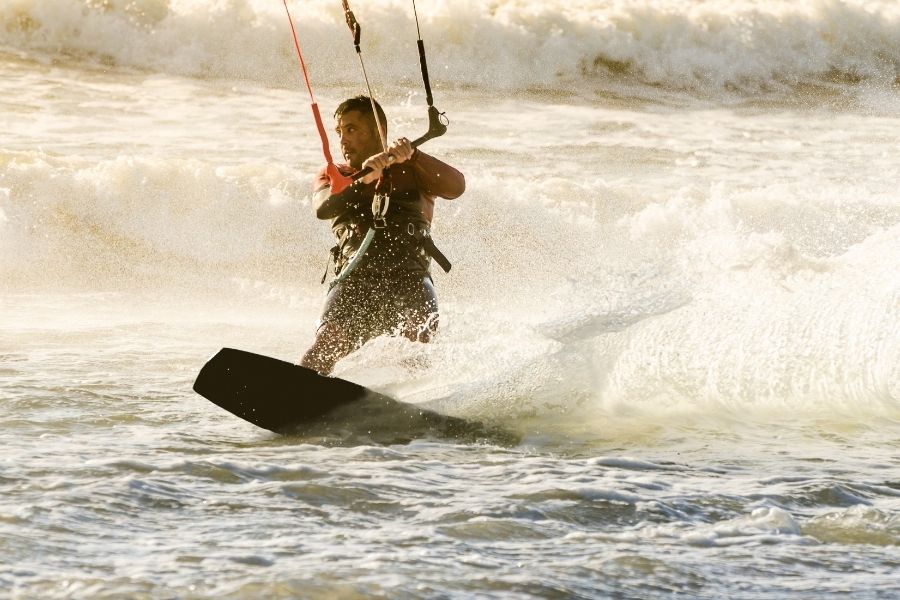
European Hotspot Status
Every summer, Prasonisi ranks among Europe’s top kitesurfing destinations. The mix of reliable wind and diverse water draws riders from all over.
Watching the Dance: Observation Points
I found a few sweet spots to watch the kitesurfers do their thing. The narrow sandbar joining the mainland and the islet gives unbeatable views.
The Central Strip
Standing right on the sandbar, I could watch beginners practicing on the calm side and experts tearing it up in the waves.
Elevated Positions
The little dunes by the parking lot offer a higher view. From up there, you get the full sweep of the kitesurfing scene.
Wave Side Viewing
The rocky edge on the wave side puts you close to the action. It’s easy to appreciate the skill it takes to ride those conditions.
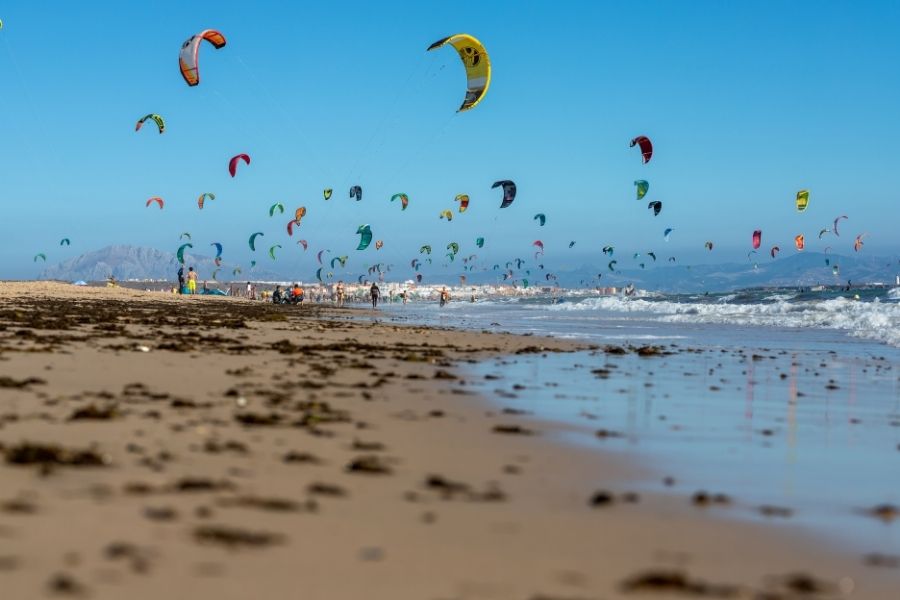
Best Times
Afternoons are prime time. The Meltemi peaks, and the riders go big with jumps and tricks.
Local Kitesurfing Schools and Events
Three kitesurfing centers operate at Prasonisi, each catering to different skill levels.
School Services
- Beginner lessons on the flat side
- Advanced coaching for wave riding
- Rental gear, always up to date
- Safety tips and wind-reading basics
Equipment Quality
All the centers stock top-notch kites and boards. They keep their gear fresh and modern.
Lesson Structure
Most schools offer half-day or full-day sessions. Beginners start with some theory, then move to shallow water for hands-on practice.
Peak Season Activity
In July and August, the scene gets busy. Schools run back-to-back sessions.
Local Events
Sometimes, summer brings informal competitions where locals and visiting pros show off their skills.
Exploring Beyond the Surf
Sure, the waves and colorful kites steal the show, but Prasonisi has more up its sleeve. The sandbar connecting Rhodes to the islet is a unique walk, and the remote setting has kept local plants and wildlife thriving in this windswept pocket.
Walking the Sandbar
Crossing the sandy strip that links Rhodes to Prasonisi island stands out as one of the most unique experiences I’ve had on Rhodes. In summer, when the water drops, the narrow bridge of sand sits high and dry.
It’s about a 500-meter walk, maybe ten minutes if you take it slow. The sand changes underfoot, from soft grains at the edge to coarser stuff in the middle.
Best walking conditions:
- Early morning: It’s cooler and quieter.
- Late afternoon: The light is perfect for photos.
- Summer months: Lowest water, easiest crossing.
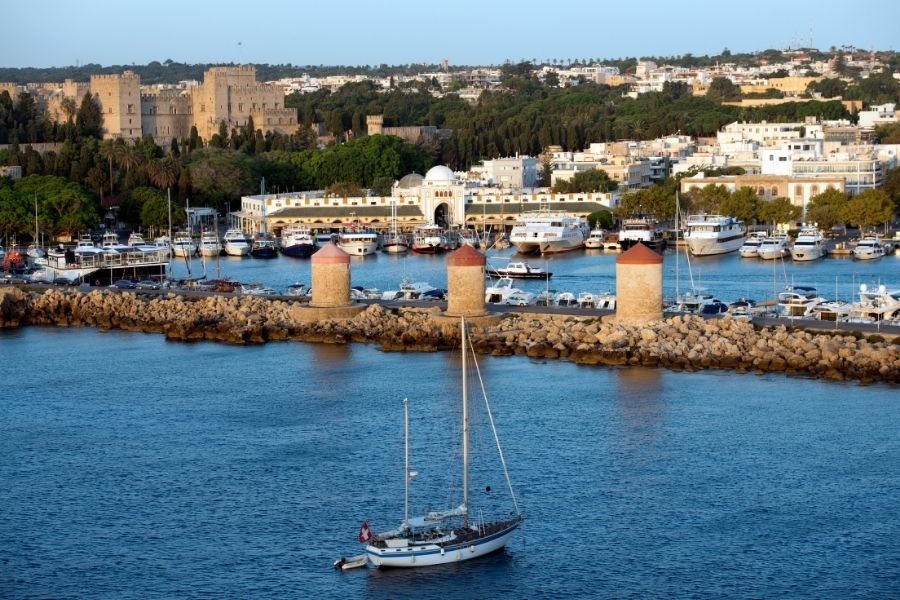
The walk gives you views of both seas at once. On windy days, I watched waves crashing on one side while the other side stayed calm. It feels almost surreal.
Bring water shoes—trust me. The sand gets scorching by midday, and scattered shells or pebbles can make barefoot walking a pain.
Unique Flora and Fauna
Prasonisi’s harsh coastal vibe supports plants you don’t see just anywhere. Sea daffodils bloom in late summer, their white flowers popping against the sand.
I spotted salt-loving shrubs hugging the shoreline. These tough little plants twist and bend, shaped by years of wind and salt spray.
Wildlife I spotted:
- Seabirds nesting among the rocks
- Tiny lizards darting for cover
- Crabs scuttling along the edge
- Sometimes dolphins offshore
The birds really stood out. Gulls and terns dove for fish in the clear water. If you come early, before the crowds, you’ll catch the best wildlife moments.
Around the lighthouse, small mammals and reptiles find shelter. I saw their tracks and droppings, though the animals themselves mostly stayed hidden during the day.
Nearby Cultural and Historical Sites
Kattavia village, just a few kilometers from Prasonisi, pulled me into the rhythms of traditional Rhodes life. It’s a tiny farming community, and I noticed those local tavernas really do serve up whatever’s fresh from nearby fields.
When I explored the old Prasonisi lighthouse, I could feel its history. Built during the Italian occupation, it still guides ships at the very tip of Rhodes.
Historical sites within 30 minutes:
- Ancient Apollonia ruins (15 km north)
- Traditional windmills near Kattavia
- Small Byzantine church of Agios Pavlos
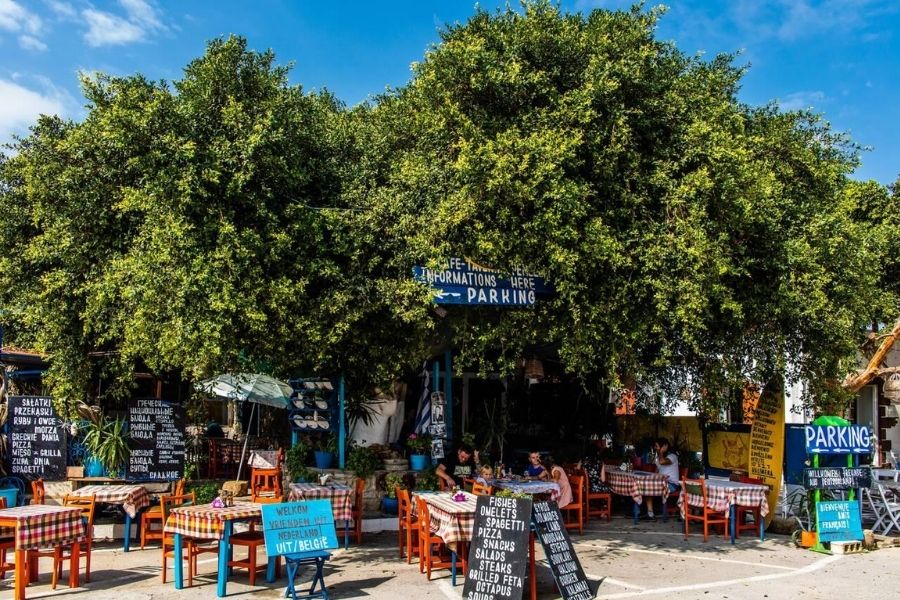
Driving to Prasonisi, I passed olive groves, vineyards, and goats wandering through open pastures. These scenes seem unchanged for generations.
Farmers out here stick to old methods. I watched an older couple tending their vegetable patch, probably the source of the herbs and greens at the local taverna.
Tips for Planning Your Visit to Prasonisi
Prasonisi sits at the extreme southern edge of Rhodes, and the wind can change a lot depending on the season. The drive from Rhodes town is about 90 kilometers, so planning matters, especially since places to stay are scarce.
Nearby Kattavia has a few basic options if you need to stay close.
Best Times for Winds and Waves
I’ve learned the wind at Prasonisi isn’t the same on both sides of the beach. The western Aegean side? That’s where the strong winds hit, perfect for kitesurfing. The eastern Mediterranean side stays much calmer, which beginners and families seem to prefer.
Summer (June-August) brings steady winds. I usually notice the strongest gusts from late morning into the early evening.
The eastern side works well for:
- Beginner windsurfers
- Families with kids
- Swimming and relaxing
The western side is better for:
- Experienced kitesurfers
- Anyone chasing serious wind
- Advanced water sports
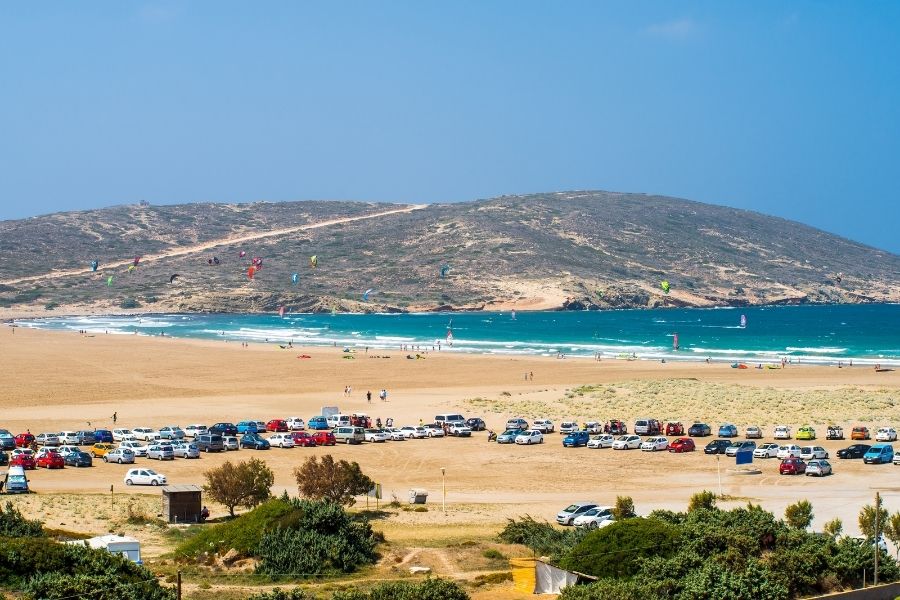
Spring and fall have moderate winds, but fewer rentals stay open. Winter? It’s possible, but expect unpredictable weather and limited facilities.
Getting There and Accessibility
The drive from Rhodes town takes about 1.5 hours. Renting a car is easiest; public buses only run in summer.
By car: The coastal road winds through Lardos, Kiotari, and Gennadi before reaching Kattavia. Once you’re there, clear signs point the way for the last 8 kilometers.
By bus: KTEL runs summer buses from the main station in Rhodes town. Their winter service stops, so double-check the schedule if you’re traveling off-season.
You’ll find free parking at the beach entrance. Roads are in good shape, so the drive shouldn’t be stressful.
Where to Stay and Eat
Places to stay near Prasonisi are few and far between. The Prasonisi Lighthouse Boutique Hotel sits right at the beach, but it fills up fast in summer.
Kattavia village (8 kilometers away) has some guesthouses and apartments. Staying there keeps things quieter but still close to the action.
For food, I tried a couple of tavernas near the parking lot, including Lighthouse Tavern. There’s also a little supermarket for snacks and drinks.
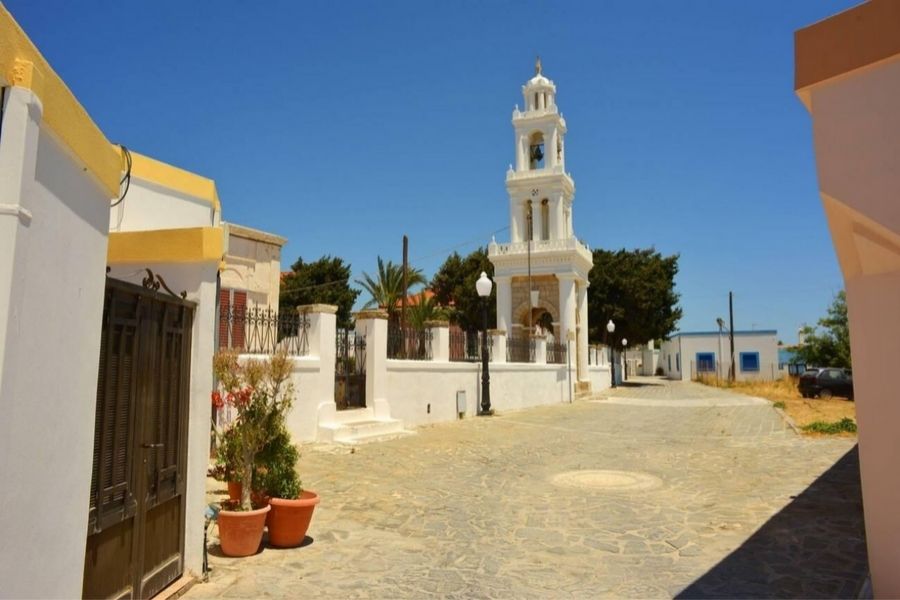
Many people base themselves in Lindos (about 45 kilometers away) or other southern villages, then just day-trip to Prasonisi.
Frequently Asked Questions
Prasonisi Beach marks the southernmost tip of Rhodes, where the Aegean and Mediterranean seas meet. The sandy strip here links the main island to a small islet during summer, depending on water levels.
What are the distinguishing features of Prasonisi Beach?
Prasonisi Beach stands out because of its sandy strip connecting Rhodes to a little islet. This creates two totally different coastlines side by side.
One side faces the Aegean—expect stronger winds and bigger waves. The other side, looking out over the Mediterranean, stays much calmer.
In summer, water drops and exposes more of the sandbar. During winter, higher water sometimes makes Prasonisi look like a true island.
The beach stretches out with fine sand, and the wind rarely lets up. It’s a magnet for wind sports.
Can visitors observe both the Aegean and Mediterranean seas from the southern tip of Rhodes?
You can absolutely see both seas from Prasonisi Beach. It’s wild standing there, watching the two bodies of water meet.
From the sandbar, you can walk from one side to the other and feel the difference—the Aegean side is usually rougher, while the Mediterranean side stays gentle.
The contrast is obvious, especially on windy days. Standing at the tip, you really get the best view of the two seas colliding.
What activities are available for tourists at Prasonisi Beach?
Kitesurfing and windsurfing rule here. The wind is so reliable, it’s become one of Greece’s top spots for both.
Rental shops line the beach, offering kites, boards, and wetsuits for all levels.
Swimming’s possible, but you need to be careful—the currents can get strong. The Mediterranean side is much safer for a dip.
Photographers love the unique landscape. Even if you’re not into water sports, just watching the action is worth the trip.
When the tide’s low, you can walk out to the little island. The view from the end is something you won’t forget.
How can one get to Prasonisi Beach from Rhodes’ main towns?
I drive through Kattavia to reach Prasonisi Beach. From Rhodes Town, the drive takes about an hour.
The route heads south, cutting through the island’s center. After Kattavia, signs lead you down a winding but decent road.
The last stretch climbs and dips over hills. The pavement’s good, but some sections get narrow.
Public transport doesn’t really reach out here, except for a few summer buses. Renting a car or joining a tour is the way to go.
The drive itself is scenic, especially in the south. If you go in summer, start early to beat the crowds.
What are the parking options available near Prasonisi Beach?
You’ll find free parking right near Prasonisi Beach. The main lot sits on a little hill before the sand starts.
It’s unpaved and gets dusty in summer, and it fills up fast when windsurfing season peaks.
Some extra parking spots line the access road, but they’re not as secure.
I usually arrive early to grab a good spot. When the wind’s up, the area gets packed.
There aren’t any attendants, so you park at your own risk—definitely don’t leave valuables in the car.
Is there a specific season recommended for kitesurfing at Prasonisi?
Honestly, if you’re chasing the best kitesurfing conditions at Prasonisi Beach, July and August are hard to beat. The winds really pick up then—strong, steady, and just what you want if you’re serious about the sport.
Summer here means the Meltemi winds arrive in full force. These northern gusts sweep across the Aegean Sea, and you can almost feel the excitement in the air when they start blowing.
You’ll find the weather at its warmest during these months, too. The water feels just right, so you can stay out there for ages without freezing.
Spring and early fall? They’re not bad either. I’ve caught some decent wind, but it’s a bit of a gamble—sometimes you get lucky, sometimes not so much.
Once winter rolls in, the wind days drop off dramatically. Most of the kitesurfing schools and rental shops shut their doors until things pick up again.

